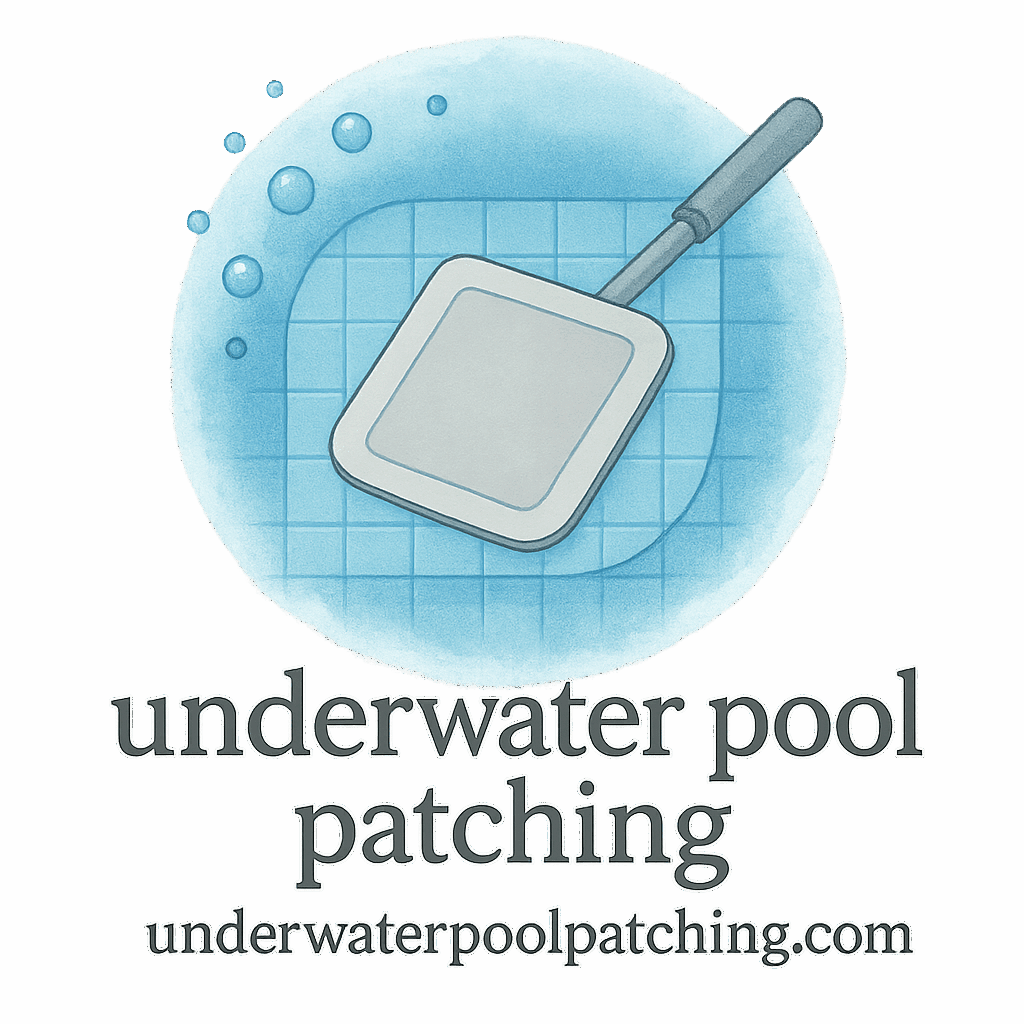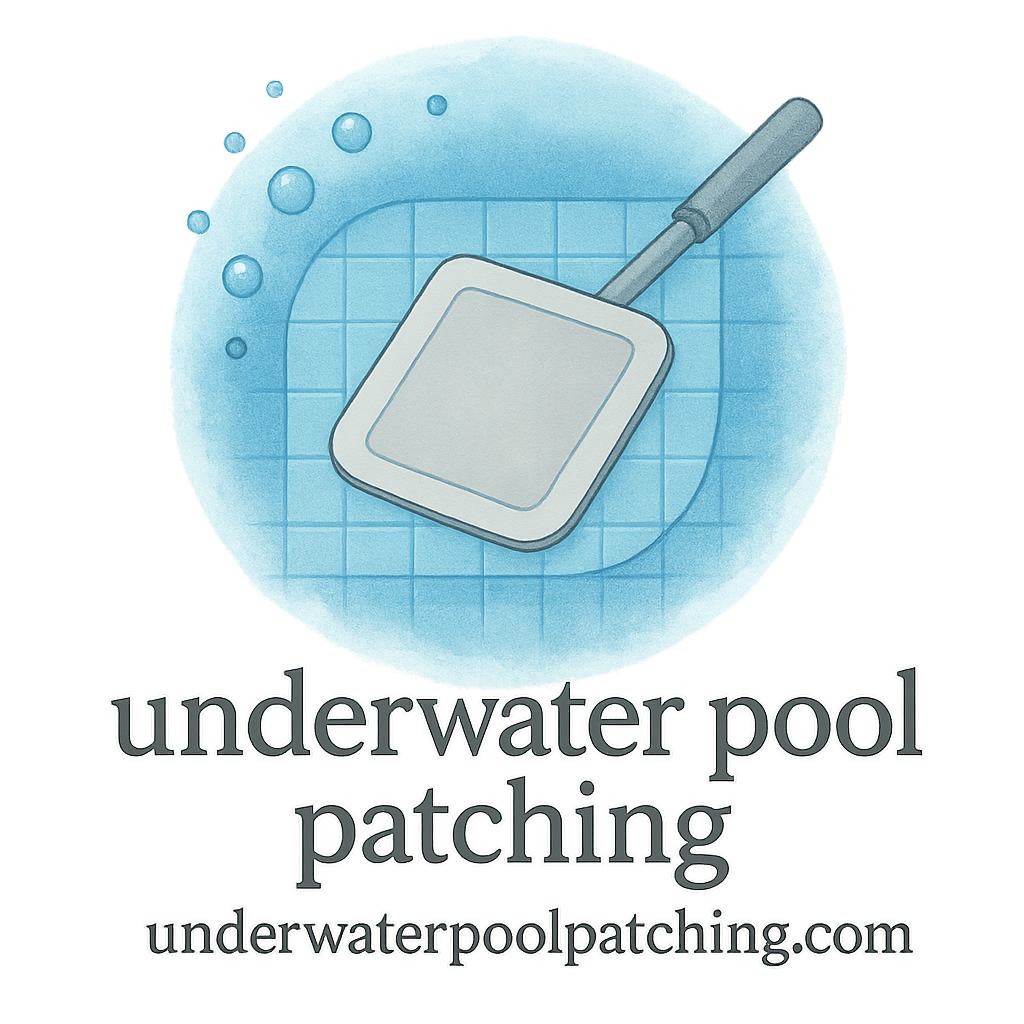Introduction
So you’ve just completed an underwater pool patching job — great! But before you dive back in (literally), there’s one more crucial phase: the cleanup. Proper clean-up after patching ensures the repair lasts longer, keeps the pool safe to swim in, and maintains your water’s balance. Let’s walk through 10 clean-up steps after underwater pool patching to help you protect your investment and avoid future headaches.
Step 1: Allow the Patch to Cure Properly
Importance of Curing Time
Before any cleanup begins, make sure the patch has cured completely. Depending on the patch types and materials you used, curing could take anywhere from 24 hours to several days. Epoxy-based patches, for example, might need extra time. You’ll find more details on proper patch materials here.
Common Mistakes to Avoid
One of the biggest mistakes? Jumping into cleanup too soon! Disturbing a fresh patch can weaken the seal and send you right back to square one. Trust us—it’s worth the wait. Patience equals patch life longevity. For more on this, check out the patch life tag.
Step 2: Gently Skim the Pool Surface
Tools You’ll Need
Grab a pool skimmer net and gently remove any floating debris. Loose bits of patching material, leaves, or dust may have settled on the surface during repair. This helps ensure that your pool filter doesn’t get overloaded right off the bat. Plus, it’s a good first visual inspection step to see how clean the water looks post-repair.
Step 3: Vacuum the Pool Floor
Remove Residual Patch Particles
After a patch job, it’s normal for some particles to sink to the bottom. Whether it’s epoxy flakes or vinyl scrapings, vacuuming the floor removes them efficiently. If you skip this step, those materials can be recirculated into the system, clogging up your filter. For more advice, visit our article on repair techniques.

Step 4: Inspect Patch Area Again
What to Look For
Get up close and personal with the patch. Is it smooth? Has it adhered properly? Any signs of peeling or air bubbles? A thorough inspection and diagnosis helps you catch small issues before they turn into major ones. Visit our inspection-diagnosis page for pro tips on what to check.
Step 5: Conduct a Pressure Test
Ensure No New Leaks
It’s smart to run a pressure test after patching, especially if you did the repair due to a leak. This will confirm the issue has been resolved and there aren’t any sneaky leaks elsewhere. If you’re not sure how, consult our guide on leak detection and pressure test.
Step 6: Clean the Pool Walls
Safe Cleaning Products Post-Patching
Use non-abrasive brushes and patch-safe cleaning solutions. Avoid harsh chemicals that could erode fresh patches. Keeping walls clean helps maintain the look and integrity of your patch. You’ll also reduce algae buildup and improve water clarity, which makes future problems easier to spot.
Step 7: Rebalance Pool Chemistry
Check pH, Chlorine, and More
Patching can subtly alter your water chemistry, especially if materials like epoxy or adhesives were used underwater. Grab your test kit and check pH, chlorine, alkalinity, and calcium hardness. Rebalancing now helps extend your patch’s lifespan. Explore more on chemical balance in our maintenance-prevention resources.
Step 8: Backwash or Clean Your Filter
Why Your Filter Matters After Patching
Your pool filter works hard after a patch—removing dust, glue particles, and debris. Give it some love with a backwash or full clean depending on your filter type. A clogged filter can mess with circulation, which is the enemy of a long-lasting patch. Learn more through our maintenance tips.
Step 9: Document the Repairs
Why Keeping a Maintenance Log Matters
Record the date, type of patch used, and area of repair. This info will be gold next time you or a pro evaluates your pool. Keeping a log helps you spot patterns and can save money long-term. You can also create a maintenance plan using our tagged resources.
Step 10: Schedule a Routine Check
Future Maintenance Planning
The final step? Set reminders. Even a small underwater pool patch can shift over time. Routine checkups catch problems early and keep your pool looking (and performing) great. Check out our guide on routine checks and consider a subscription plan for regular maintenance.
Conclusion
Cleaning up after underwater pool patching isn’t just about appearances—it’s crucial for longevity, water safety, and cost-saving. From vacuuming to balancing chemicals and scheduling future checks, every step counts. Stick to these 10 steps and your patchwork will go the distance.
Want more expert tips? Dive deeper into professional solutions and patching strategies by visiting underwaterpoolpatching.com.
FAQs
1. How soon can I swim after underwater pool patching?
Wait until the patch is fully cured—typically 24–72 hours depending on materials. Always check manufacturer guidelines.
2. Do I need to vacuum if I already skimmed the pool?
Yes! Skimming only clears surface debris. Vacuuming removes particles from the floor that could damage your filter or cloud water.
3. What should I do if my patch starts peeling?
Inspect it immediately and consult a repair expert for reapplication tips or advanced fixes.
4. Can I use regular pool cleaners after patching?
Avoid harsh chemicals. Stick to mild, patch-safe cleaners to avoid degrading the patch.
5. What if the water chemistry is off after patching?
Test your water and rebalance as needed. Use resources on maintenance-prevention to help with this.
6. Is documenting repairs really necessary?
Absolutely. It helps track patch life and supports long-term budget planning.
7. Can I do all these steps myself or hire someone?
DIY works great if you’re confident, but you can always bring in a pro for thorough inspection and diagnosis or maintenance.


